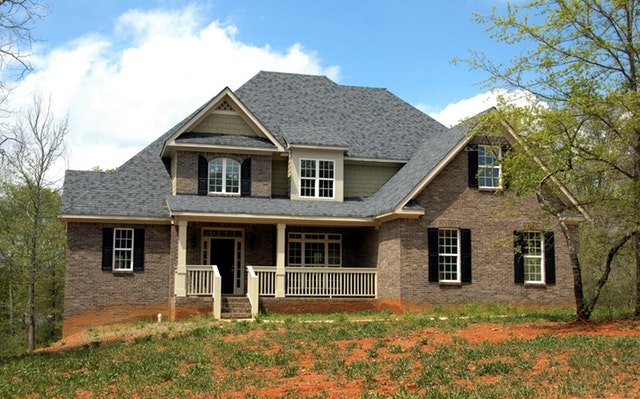 The Federal Reserve’s Federal Open Market Committee reduced its key short-term interest rate range one-quarter percent to 1.75 to 2.00 percent during it’s September meeting. While FOMC members had mixed opinions on reducing the benchmark rate range for short term loans, the post-meeting statement suggested that reducing the federal funds rate was a hedge against inflation. The federal funds rate impacts short-term consumer loan rates for autos and adjustable rate mortgages, but does not impact fixed mortgage rates. FOMC monetary policy decisions are governed by the Federal Reserve’s dual mandate of maintaining price stability and an inflation rate of 2.00 percent.
The Federal Reserve’s Federal Open Market Committee reduced its key short-term interest rate range one-quarter percent to 1.75 to 2.00 percent during it’s September meeting. While FOMC members had mixed opinions on reducing the benchmark rate range for short term loans, the post-meeting statement suggested that reducing the federal funds rate was a hedge against inflation. The federal funds rate impacts short-term consumer loan rates for autos and adjustable rate mortgages, but does not impact fixed mortgage rates. FOMC monetary policy decisions are governed by the Federal Reserve’s dual mandate of maintaining price stability and an inflation rate of 2.00 percent.
FOMC Members Facing Conflicted Opinions On Rate Cuts
Policymakers consider a variety of influences and news when cutting or raising the federal funds rate range. In addition to its dual mandate, FOMC members consider domestic and global impacts on the economy. Uncertainty over effects of international trade disputes and Great Britain’s looming exit from the European Union balanced strengths in the U.S. economy.
According to the post-meeting statement, seven FOMC members voted in favor of the rate cut to 1.75 to 2.00 percent; one member voted for a rate cut to 1.50 to 1.75 percent and two members voted against changing the target federal funds rate range.
Fed Chair: U.S. Economy Expected To Stay Strong
Fed Chair Jerome Powell said in a post-meeting press conference that while U.S. economy expanded for its 11th consecutive year, global economic outlook was less certain particularly in Europe and China. The U.S. economy expanded 2.50 percent in the first half of 2019; factors driving growth included rising consumer confidence, wages and strong job markets. Business investment and exports were lower due to uncertainties over trade. Job growth slowed, but this was expected based on 2018’s fast pace of job growth. Work force participation grew; the Fed expects the national unemployment rate to remain below four percent for the next few years.
Chair Powell said that maintaining strong economic conditions was particularly important for low to middle income consumers left behind during the Great Recession. While current inflation stands at 1.40 percent, the Fed projects that it will grow to 1.90 percent in 2020 and achieve the target goal of 2.00 percent in 2021. Chair Powell said that inflation pressures are muted and at the lower end of historical ranges.
Chair Powell echoed the FOMC statement in saying that the Fed would continue to monitor economic developments abroad and would adjust monetary policy according to economic developments prompted by trade disputes and emerging economic developments.
 The National Association of Home Builders Housing Market Index shows steady builder confidence in housing market conditions. September’s index reading of 68 was one point higher than August’s reading. Any reading over 50 indicates that most home builders surveyed view housing market conditions as favorable. August’s original index reading was adjusted upward by one point.
The National Association of Home Builders Housing Market Index shows steady builder confidence in housing market conditions. September’s index reading of 68 was one point higher than August’s reading. Any reading over 50 indicates that most home builders surveyed view housing market conditions as favorable. August’s original index reading was adjusted upward by one point. The rapidly rising home prices currently found in many parts of the United States make it seem like the Great Recession of 2008 never happened. It took approximately eight years for home prices to recover the values that were equivalent to those they had before the recession.
The rapidly rising home prices currently found in many parts of the United States make it seem like the Great Recession of 2008 never happened. It took approximately eight years for home prices to recover the values that were equivalent to those they had before the recession. modestly priced. The demand for smaller, less expensive homes is growing, while the overall demand for new custom homes is declining. Prices decreased slightly, by about one-half percent, from the price levels in 2018 for newly-constructed homes.
modestly priced. The demand for smaller, less expensive homes is growing, while the overall demand for new custom homes is declining. Prices decreased slightly, by about one-half percent, from the price levels in 2018 for newly-constructed homes. Home price growth continued to slow in June according to Case-Shiller’s 20-City Home Price Index. 17 cities reported higher home prices in June, but three cities reported lower home prices month-to-month. Seattle, Washington was the only city to report lower home prices year-over-year in June.
Home price growth continued to slow in June according to Case-Shiller’s 20-City Home Price Index. 17 cities reported higher home prices in June, but three cities reported lower home prices month-to-month. Seattle, Washington was the only city to report lower home prices year-over-year in June. Don’t panic, a looming recession may be good news for those wanting to sell their homes. The experts say this recession may happen in 2020, so there is still plenty of time to make plans for how to deal with a potential economic downturn.
Don’t panic, a looming recession may be good news for those wanting to sell their homes. The experts say this recession may happen in 2020, so there is still plenty of time to make plans for how to deal with a potential economic downturn.